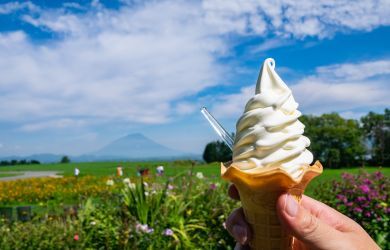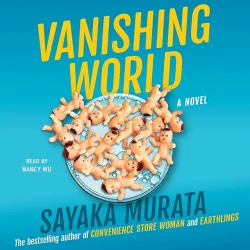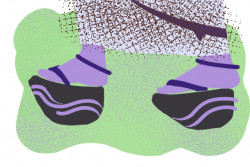
Originally published on metropolis.co.jp on July 2011

About a year ago, I decided something had to change. I had always been relatively environmentally aware, but something in my mind sparked and I decided I wanted to do more to reduce my personal carbon footprint.
I found out that, apart from electricity usage and transportation, a great deal of our carbon emissions come from the food we eat. That sounded strange to me at first, but as I continued researching, I found some shocking statistics. In 2006, Japan’s food self-sufficiency was 39 percent. That means the majority of what we eat here in Japan every day is shipped to us, sometimes from halfway across the world. Automatically, this raises the carbon footprint of our diets. And only a mere 0.3 percent of Japan’s farmland is organic. Commercial fertilizers are created using the Haber Process, which uses exorbitant amounts of energy to turn the nitrogen in the air into nitrates for soil. So the more non-organic food we eat, the more our carbon footprints go up, not to mention the potentially very dangerous pesticides we are consuming at the same time.
Carnivores will be upset to hear how wasteful meat is as a food source. A ten-acre farm used for raising cattle can support two people, while the same farm used for growing soybeans can support 60 people. In the US, meat requires about eleven times more fossil fuel to produce than vegetables. This makes our diets even more carbon emission intensive. But what if you love meat and can’t imagine becoming a vegetarian?
Here’s some good news: You don’t need to totally stop eating meat to make a difference. If enough people become weekday vegetarians or stop eating beef, lamb and other cud-chewing livestock, and more pastureland can re-grow into forest, then the cost of climate change mitigation would go down by 40-70 percent by 2050. On a personal scale, becoming a vegetarian can save between 0.5 and 1 ton of CO2 emissions a year—so even cutting out meat for a few days a week will significantly lower your emissions.
If you decide to cut down on meat consumption, you need another source of protein. In Japan, eating seafood instead of land animals sounds like a rational and easy idea. In theory—yes. However, because of the lack of fishing regulations, combined with new fishing technology, many marine species are being overfished at an alarming rate. Some fish stocks— like bluefin tuna and cod—have depleted 90% since 1900. But how can an individual consumer choose not to support this form of commercial fishing?
The easiest thing to do is to stop ordering and buying exploited fish. Greenpeace’s red list of overfished species (http://meturl.com/seafoodredlist) has some 20 species of seafood, including tropical shrimp, Atlantic salmon and multiple species of tuna. Depending on where or how the fish is caught, some red list species can be eaten. For example, albacore tuna (the tuna found in cans) is on the red list, but if it is caught by simple trolling or pole and line, it is perfectly healthy for the oceans.
Until recently there was no way of knowing whether fish bought from a supermarket in Japan was over-exploited or not. However, since 2006, fish certified by the Marine Stewardship Council (MSC), the worldwide certification and labeling organization for sustainable seafood, has been sold in Japanese supermarkets such as Aeon, Seiyu and Isetan. This is a huge step for Japan, a main culprit in the overfishing crisis, and gives consumers the information to choose a better alternative.
Though there is not a big network of stores selling organic or locally grown products here, the demand for organic food is rapidly rising and so are the choices. Many chain supermarkets such as Seijo Ishii and Peacock now have an organic section, albeit small. There is also the weekly grocery delivery service Radish Boya for domestically grown organic produce. The Natural House chain, with branches all over Tokyo, sells many organic and farm-fresh produce.
I wanted to find something I could do as an individual everyday to help the environment. At the same however, I have discovered the simple joy of cooking that comes with caring about my diet. Eating less meat and cooking at home more often has become a pleasure, and it’s healthier and better for the environment, as well. It’s not just about cutting out meat or cutting out fish, but about focusing more on what is going into our mouths and where it comes from. That doesn’t mean we can’t go out and enjoy meals. All we need is some restraint—and the rest comes easily.







